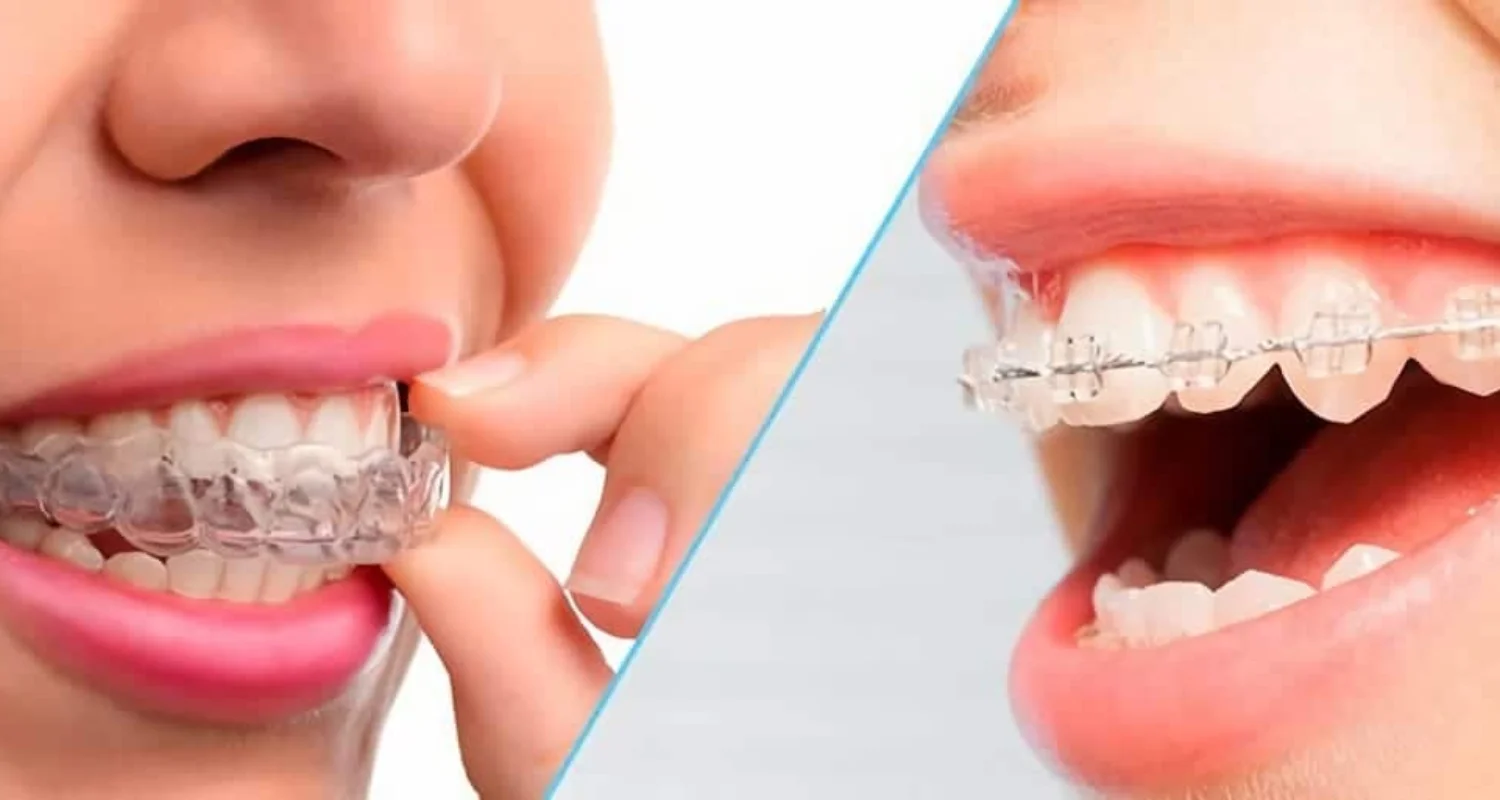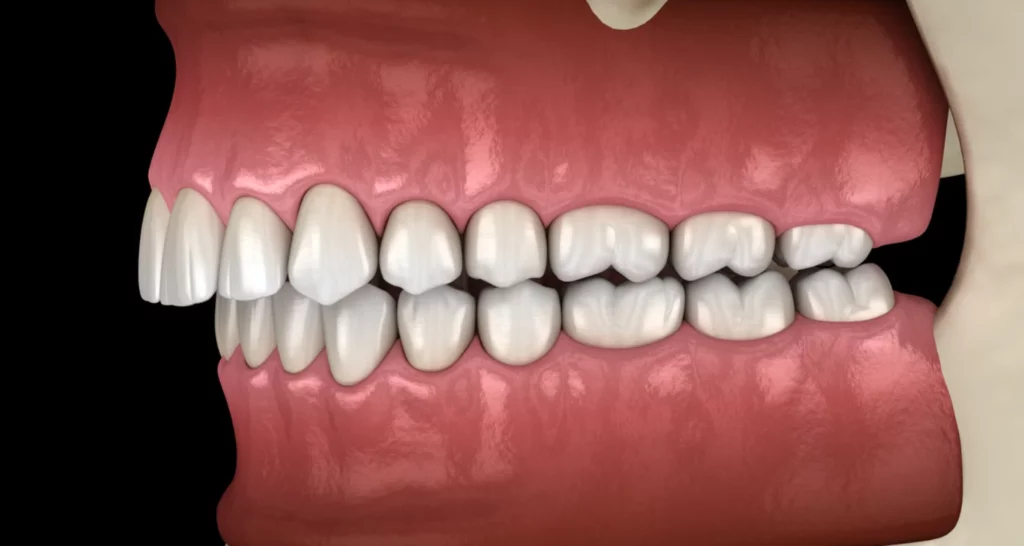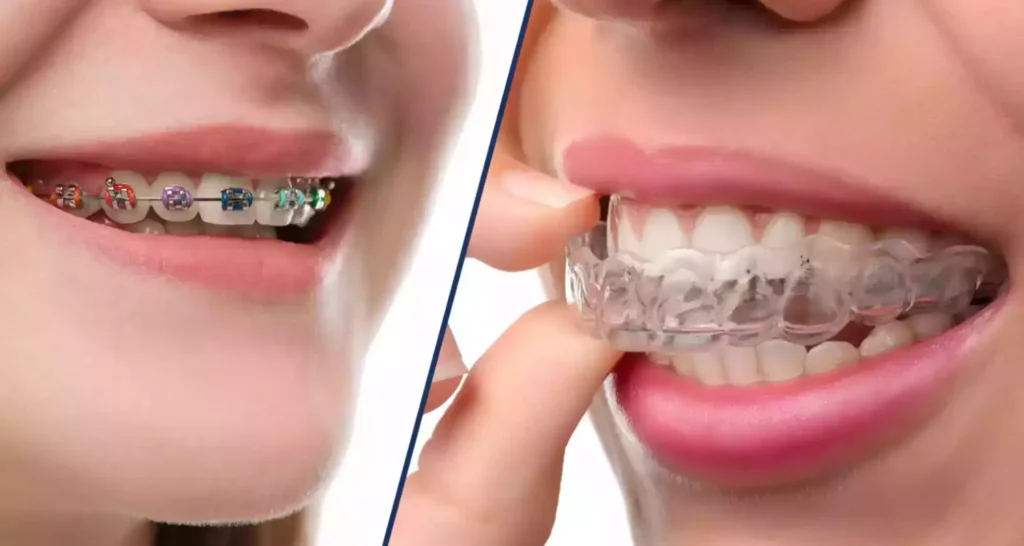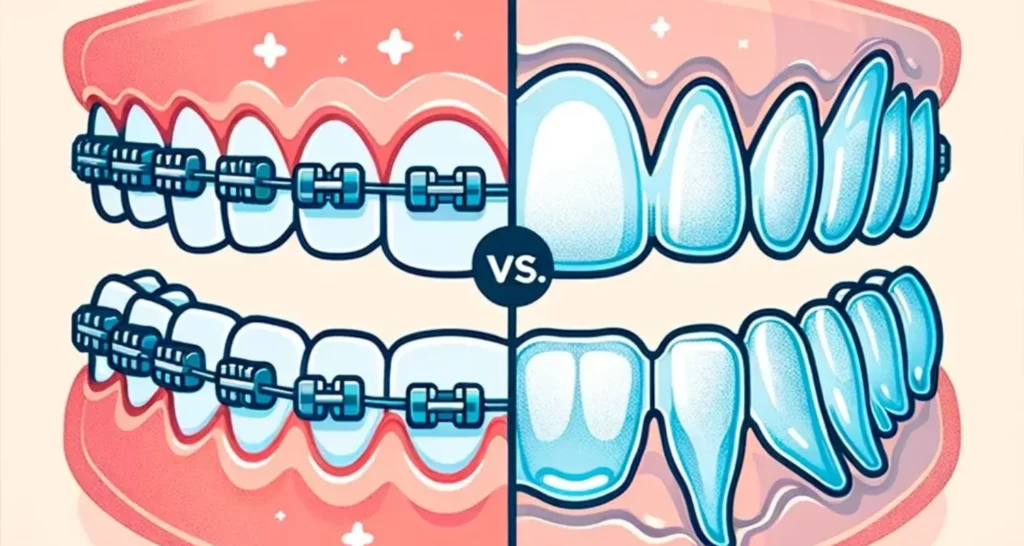Last Updated on: 13th December 2025, 06:30 am
Have you been told that your teeth are misaligned and you’re eager to correct the problem? Are you torn between invisible aligners and traditional braces? Look no further; this article is your ultimate guide!
Recently, the need for orthodontic treatment among adults has increased dramatically. This surge is driven not only by a desire for improved aesthetics, but also the pursuit of better oral function and hygiene. Adults are particularly focused on finding comfortable and nearly invisible alternatives to traditional metal braces for correcting malocclusion.
Before we begin, we need to understand what malocclusion is and why it is important to correct it.
What is malocclusion?
Malocclusion, defined as a “poor bite,” encompasses a variety of dental issues. It is more of a developmental issue than a disease. Its cause remains unclear; but we know that it can impact the teeth, bone tissue, and other oral neuromuscular components.
Often, multiple factors contribute to malocclusion. Poor aesthetics, psychological distress, and difficulty in maintaining oral hygiene are among the most important reasons why patients seek dental intervention.
Malocclusion can be classified into three broad categories, namely class I, class II and class III. In this article, we will explore class II malocclusion and compare treatment options like invisible aligners and traditional braces to determine the most effective method for orthodontic correction.
Understanding class II malocclusion
Class 2 malocclusion, also known as retrognathism or overbite, occurs when the upper jaw and teeth severely overlap the bottom jaw and teeth. It is a common concern in orthodontic practices, with a prevalence of 37% in European countries and 33% in the United States.
Class II malocclusion can be further classified into division 1 and division 2.
Class 2 Division 1 malocclusion refers to a condition where the upper front teeth protrude significantly beyond the lower front teeth, creating an overbite. This is due to a prominent upper jaw and a less prominent lower jaw, resulting in an uneven bite and distorted facial appearance.
Class 2 Division 2 malocclusion features upper front teeth protruding over lower teeth, with upper teeth more upright and longer than adjacent ones. Lower front teeth may tilt backward, creating a pronounced overbite.
If you have either condition, both can be successfully treated with either Invisalign or traditional braces. Unsure which option is best? Continue reading to understand what ideally suits you!
Brackets v/s Invisalign: a comparison
Whether you’re aiming to align crowded teeth, close gaps, or correct a misaligned bite, both braces and Invisalign clear aligners share the common goal of improving teeth alignment. Braces entail brackets attached to each tooth with wires connecting them, while Invisalign treatment utilizes a series of removable, snug-fitting clear plastic aligners, offering a less intrusive option.
Both Invisalign and braces correct teeth alignment and spacing, exhibiting similarities and differences, such as:
- Price: Braces typically cost $3,000–$7,000 in the US, similar to or slightly less than Invisalign. Costs vary based on location, treatment duration, and complexity.
- Aesthetics: Braces use brackets and wires that may be visible, although options like clear or lingual braces offer less noticeable alternatives. Invisalign’s clear plastic aligners are nearly invisible.
- Comfort: Braces may initially cause discomfort and irritation, especially after adjustments. Invisalign trays will feel unusual at first but generally have a smoother feel.
- Effectiveness and speed: Invisalign treats mild to moderate cases effectively but may not be suitable for complex issues like severe crowding. Treatment typically ranges from 12 to 18 months, as compared to braces which may take longer, depending upon the complexity of the case.
- Eating and oral care: With braces, certain foods must be avoided to prevent damage, while Invisalign trays are removable, allowing normal eating and easy cleaning. Both require diligent oral hygiene to avoid tooth decay and gum issues.
Invisalign or brackets: the better choice for treating class II malocclusion?
Choosing between Invisalign and braces depends upon your preferences and specific dental needs. Invisalign offers a discreet option, making it ideal for those concerned about the visibility of braces, especially adults.
The removable nature of aligners makes it easier to maintain oral hygiene during treatment. However, some find it inconvenient to wear them for 20-22 hours daily, and they must be removed when eating or drinking anything except water. Moreover, Invisalign may not be suitable for everyone, especially if you’ve had previous orthodontic treatments and dental issues such as:
- Rotated teeth
- Excessive overbite
- Severe crowding Large gaps
- Tooth displacement.
In these cases, traditional braces are often more effective.
Why should I get my malocclusion corrected?
Why should you get your teeth aligned, you ask? Well, correcting malocclusion under the supervision of an orthodontist offers several important benefits, such as:
- Improved oral health: Properly aligned teeth are easier to clean, reducing the risk of tooth decay, gum disease, and other oral health issues.
- Enhanced functionality: Correcting malocclusion can improve your bite, making it easier to chew and speak effectively.
- Pain relief: Addressing alignment issues can alleviate pain and discomfort in the jaw, neck, and head often associated with malocclusion.
- Improved aesthetics: Straightening your teeth can significantly enhance your smile and boost your self-confidence. Who doesn’t want a beautiful smile?
- Preventing further complications: Early correction can prevent more serious dental problems in the future, such as tooth wear, TMJ disorders, and even tooth loss.
- Balanced facial structure: Proper alignment contributes to a more balanced facial appearance, positively affecting overall facial aesthetics.
- Improved digestive health: Correcting your bite ensures that food is properly chewed, aiding in better digestion and nutrient absorption.
In summary, while Invisalign presents as a versatile tool in the orthodontic arsenal, its application in class II malocclusion cases, especially in adults, requires careful case selection and a keen understanding of its capabilities and limitations. Treatment outcomes vary depending upon the specific malocclusion characteristics and the chosen treatment approach.
Every person’s malocclusion is unique and requires a customized approach. There is no universally superior treatment; it’s about finding what best fits your needs. Head over to your nearest orthodontist to understand which option will make your smile better!
Frequently Asked Questions
Do orthodontists prefer braces or Invisalign?
Orthodontists don’t necessarily prefer one treatment over the other universally; their recommendations depend upon the specific needs of each patient. Traditional braces are often preferred for more complex dental issues since they provide more precise control over tooth movement. Invisalign, on the other hand, is favored for its aesthetic appeal and comfort, making it a popular choice for adults and teens with mild to moderate alignment issues.
Should I get braces or Invisalign?
The decision between braces and Invisalign depends upon various factors, including the complexity of your dental issues, lifestyle, and personal preferences. Braces are typically recommended for severe alignment problems, while Invisalign is suitable for minor to moderate corrections. Consider consulting with an orthodontist to assess your specific needs and determine which option is best for you. Factors like visibility, comfort, and maintenance will influence your decision.
What is faster braces or Invisalign?
In general, Invisalign can be faster for mild to moderate cases of dental alignment, typically taking about 12 to 18 months. Traditional braces might take longer, usually 18 to 24 months, depending upon the complexity of the case. However, for complex dental issues, braces might provide quicker and more effective results due to their ability to exert more precise forces on the teeth.
Which takes longer braces or Invisalign?
Braces usually take longer than Invisalign for minor to moderate dental corrections, often extending from 18 to 24 months. Invisalign typically offers a shorter treatment duration for similar cases, around 12 to 18 months. However, for more complex dental issues, braces might be the quicker option due to their robust and precise mechanics. Always consult with an orthodontist to get a treatment plan tailored to your needs.
Share
References
1. AlMogbel, A. (2023). Clear Aligner Therapy: Up to date review article. Journal Of Orthodontic Science, 12(1), 37. https://doi.org/10.4103/jos.jos_30_23
2. Caruso, S., De Felice, M. E., Valenti, C., Pagano, S., Caruso, S., Gatto, R., & Lombardo, G. (2024). An evaluation of the Invisalign® Aligner Technique and consideration of the force system: a systematic review. Systematic Reviews, 13(1). https://doi.org/10.1186/s13643-023-02437-5
3. Dahhas, F. Y., Al-Saif, E. M., Alqahtani, A. M., Farraj, N. F. A., Alshaikh, M. A., Almadhi, B. S., Albuolayan, N., Alhayaza, H. H., Asiri, N. A., & Alshaya, K. H. (2023). The Potency of Invisalign® in Class II Malocclusion in Adults: A Narrative Review. Curēus. https://doi.org/10.7759/cureus.49664
4. Dahhas, F. Y., Al-Saif, E. M., Alqahtani, A. M., Farraj, N. F. A., Alshaikh, M. A., Almadhi, B. S., Albuolayan, N., Alhayaza, H. H., Asiri, N. A., & Alshaya, K. H. (2023). The Potency of Invisalign® in Class II Malocclusion in Adults: A Narrative Review. Curēus. https://doi.org/10.7759/cureus.49664
5. Dorwart, L. (Mar 12, 2022). Invisalign vs. Braces: Which Is the Better Option? Verywell Health. https://www.verywellhealth.com/invisalign-vs-braces-5218916
6. González, C. (Apr 24, 2024). ¿Qué es la maloclusión Clase II de Angle? Dentaly.org. https://www.dentaly.org/es/ortodoncia/maloclusion/clase-2/
-
Nayibe Cubillos M. [Author]
Pharmaceutical Chemestry |Pharmaceutical Process Management | Pharmaceutical Care | Pharmaceutical Services Audit | Pharmaceutical Services Process Consulting | Content Project Manager | SEO Knowledge | Content Writer | Leadership | Scrum Master
View all posts
A healthcare writer with a solid background in pharmaceutical chemistry and a thorough understanding of Colombian regulatory processes and comprehensive sector management, she has significant experience coordinating and leading multidisciplina...


















